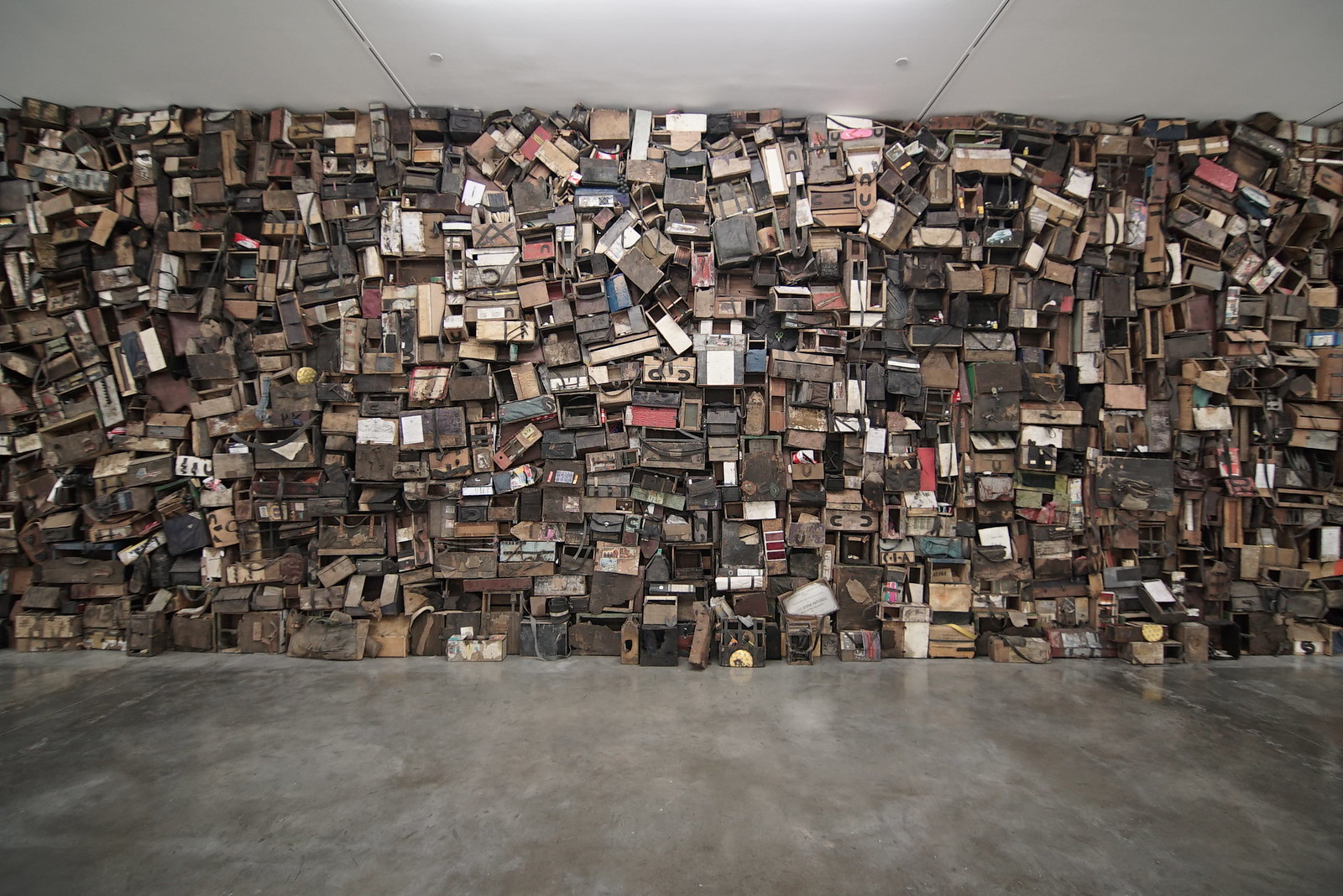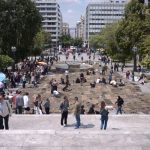Ibrahim Mahama is one of the most prominent artists to emerge from Ghana in recent years. He is known for large-scale installations incorporating jute sacks previously used to transport cocoa beans and charcoal. In its Bermondsey space in London, the gallery White Cube presents Ibrahim Mahama’s first solo exhibition in the UK. For this show, Mahama has created a new series of works including Non-Orientable Nkansa (2016), a monumental sculpture formed from stained wooden fragments.
Ibrahim Mahama: Fragments. Solo exhibition at White Cube, Bermondsey, North Galleries, London (UK). Exhibition walk-through, February 28, 2017.
> Right-click (Mac: ctrl-click) this link to download Quicktime video file.
Press text:
White Cube presents ‘Fragments’, an exhibition by Ibrahim Mahama. One of the most prominent artists to emerge from Ghana in recent years, Mahama is known for large-scale installations incorporating jute sacks previously used to transport cocoa beans and charcoal, which are stitched together and draped over architectural structures. For this exhibition, his first solo presentation in the UK, Mahama has created a new series of works including Non-Orientable Nkansa (2016), a monumental sculpture formed from stained wooden fragments.
The title of the exhibition is taken from the book of the same name by the renowned Ghanaian author Ayi Kwei Armah. Published in 1970, the novel explores the relationship between the individual and society within the newly independent Ghana, set against a backdrop of self-serving materialism and a corrupt, crumbling civic environment. Mahama’s practice equally points to the recurring themes of decay and collapse, while exploring systems of capital and production. For the work Non-Orientable Nkansa, for example, he worked with collaborators to exchange or produce hundreds of ‘shoemaker boxes’: small wooden objects made from structural materials found in the city, used to contain tools for polishing and repairing shoes. Bearing the marks of the trade of ‘shoeshine boys’, the boxes also function as an improvised drum, and are pounded to solicit business. Gathered together here in a precariously balanced single unit, the containers are crammed with other repurposed items such as heels, hammers and needles. Having been broken down and reassembled through a collaborative production staged inside a former state-owned paint factory, the boxes are an extension of Mahama’s inquiry into the life of materials and their dynamic potential, which also relates to his work with cast-off jute sacks.
The sacks, like the stained wood, undergo a series of transitions through their exchange on trade markets in Ghana and elsewhere. Produced in Southeast Asia, they are imported by the Ghana Cocoa Board for moving cocoa beans but gain a multi-functioning existence in the context of economic transactions. The sacks are used for the transportation of food and commodities as well as many aspects of domestic daily life. As Mahama has noted, ‘you find different points of aesthetics within the surface of the sacks’ fabric… I am interested in how crisis and failure are absorbed into this material with a strong reference to global transaction and how capitalist structures work.’ In site-specific interventions, materials are collected, reformed, and installed with the assistance of dozens of collaborators: artists, architects, technicians, traders, head potters, scaffolders, civil servants, executives and other protagonists in the city. When brought together on such a large scale, visible variations, hues and textures display the traces of each bag’s journey and history. Some bear official writing such as ‘Product of Ghana’, others more spontaneous words including locations and names. Shrouds of collaged burlap are layered with different materials such as threads of unravelled hessian rope, folds of oil-stained black tarpaulin and ensnared electronic and analogue components, all suspended in parallel states of transformation. Mahama intentionally refers to the jute and cloth works in this exhibition as ‘paintings’, noting that ‘within the larger interventions are moments of detail [of which these] paintings act as extracts.’
An interest in civic activity has taken Mahama into the domain of bureaucratic information gathering and its simultaneous disposal. Municipal maps and archival documents – some on the verge of destruction, others recently made digital – are superimposed with imprints of civilian information, presented in a floor-to-ceiling installation in 9x9x9. In the auditorium, a dual projection film titled Exchange Exchanger (2017) traces the process of Mahama’s production.
In these new bodies of work Mahama explores time and transference, privation and potential, as embodied through objects, materials and the traces left in their wake. As he explains, ‘the hope is that their residues – stained, broken and abandoned, but bearing light – might lead us into new possibilities and spaces beyond.’






